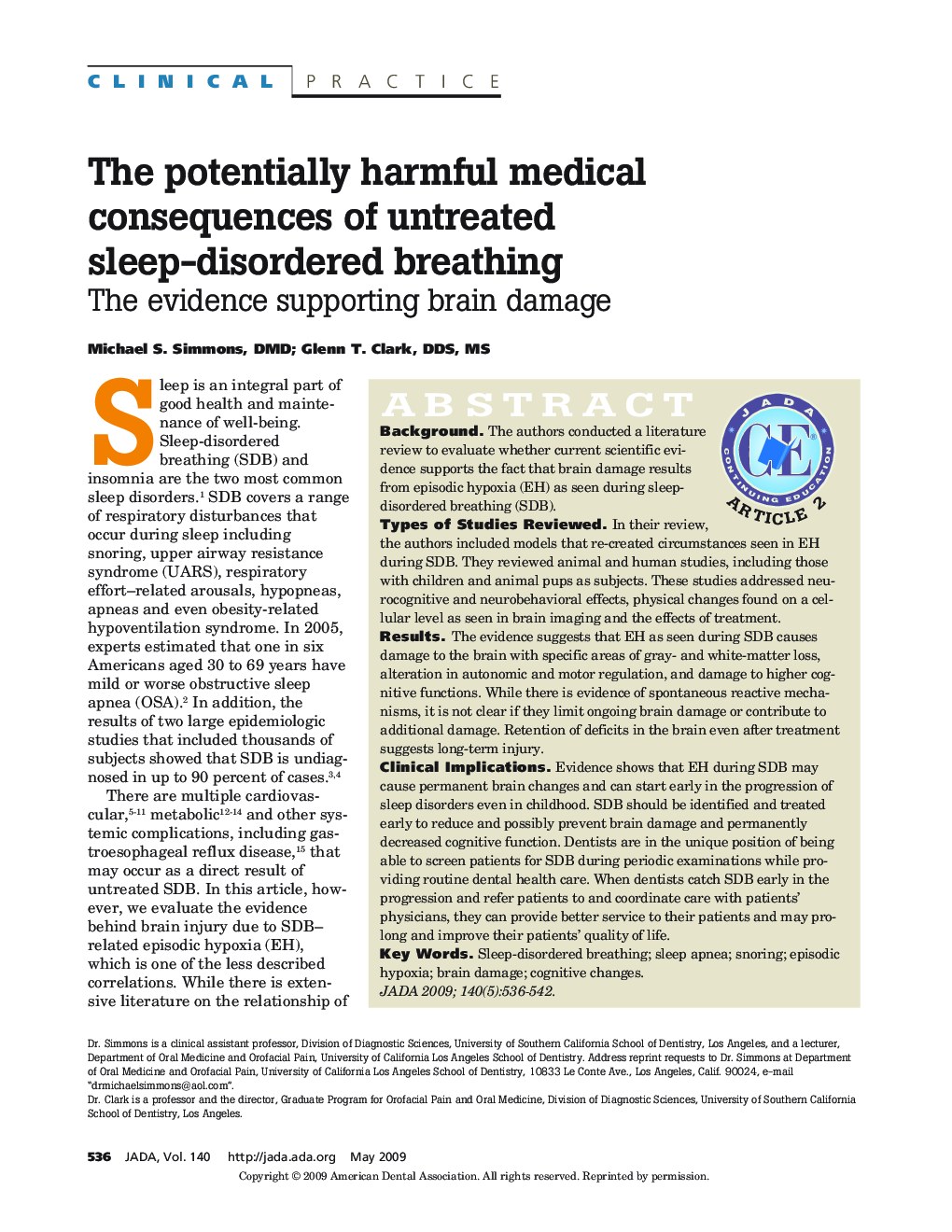| Article ID | Journal | Published Year | Pages | File Type |
|---|---|---|---|---|
| 3138857 | The Journal of the American Dental Association | 2009 | 7 Pages |
ABSTRACT BackgroundThe authors conducted a literature review to evaluate whether current scientific evidence supports the fact that brain damage results from episodic hypoxia (EH) as seen during sleep-disordered breathing (SDB).Types of Studies ReviewedIn their review, the authors included models that re-created circumstances seen in EH during SDB. They reviewed animal and human studies, including those with children and animal pups as subjects. These studies addressed neurocognitive and neurobehavioral effects, physical changes found on a cellular level as seen in brain imaging and the effects of treatment.ResultsThe evidence suggests that EH as seen during SDB causes damage to the brain with specific areas of gray- and white-matter loss, alteration in autonomic and motor regulation, and damage to higher cognitive functions. While there is evidence of spontaneous reactive mechanisms, it is not clear if they limit ongoing brain damage or contribute to additional damage. Retention of deficits in the brain even after treatment suggests long-term injury.Clinical ImplicationsEvidence shows that EH during SDB may cause permanent brain changes and can start early in the progression of sleep disorders even in childhood. SDB should be identified and treated early to reduce and possibly prevent brain damage and permanently decreased cognitive function. Dentists are in the unique position of being able to screen patients for SDB during periodic examinations while providing routine dental health care. When dentists catch SDB early in the progression and refer patients to and coordinate care with patients' physicians, they can provide better service to their patients and may prolong and improve their patients' quality of life.
